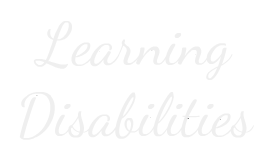Learning Disabilities
Transcript: Learning Disabilities Causes? Characteristics? Identifing? Educating? Specific learning disability means a disorder in one or more of the basic phychological processes involved in understanding or in using language, spoken or written, that my manifest itself in imperfect ability to listen, think, speak, read, write, spell, or do mathmatical calculation, including conditions such as perceptual disabilities, brain injury, minimal brain dysfunction, dyslexia, and developmental aphasia. Specific learning disability does not include a learning problem that arises primarily as the result of visual, hearing, or motor disabilities, of mental retardation, of emotional disturbance, or enviromental, cultural, or economic disadvantage. Learing disabilities is a general term that refers to a heterogeneous group of disorders manifested by significant difficulties in the acquisition and use of listening, speaking, reading, writting, reasoning, or mathmatical abilities. These disorders are intrinsic to the individual, presumed to be due to central nervous system dysfunction, and may occur across the lifespan. Problems in self-regulatory behaviors, social preception, and social interaction may exist with learning disabilities but do not by themselves constitute a learning disability. Although learning disabilities may occur concomitantly with other handicapping conditions (for example, sensory impairment, mental retardation, serious emotional disturbance), or with extrinsic influences (such as cultural differences, insufficient or inappropriate instruction), they are not the result of those conditions or influences. IDEA: Definitons NJCLD:

















